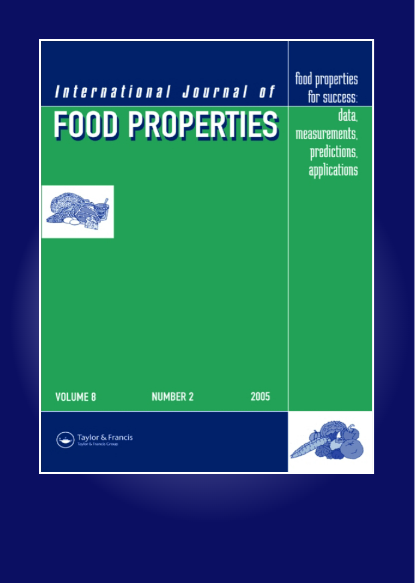探索非靶向代谢组学对肉类肌肉肱三头肌、背最长肌和股二头肌的清真认证
IF 3.9
3区 农林科学
Q2 FOOD SCIENCE & TECHNOLOGY
引用次数: 0
摘要
由于清真肉类的消费不断增长,对正宗肉类的需求也在增加。在这项研究中,采用代谢组学和化学计量学相结合的方法来鉴定来自特定肌肉群的牛肉和猪肉样品。通过非靶向代谢组学分析,在TB、LD和BF肌肉中观察到不同的代谢物谱,将猪肉与牛肉区分开来。随后,主成分分析(PCA)结果证实了牛肉和猪肉之间可区分的代谢物谱。聚类分析进一步揭示了牛肉和猪肉各肌肉代谢产物具有不同的特征。此外,偏最小二乘判别分析确定了15种潜在的代谢物可用于验证肉类的清真状态。肌酸、左旋肉碱、肌肽、烟酰胺、l-苯丙氨酸、dl -乳酸、乙酰左旋肉碱、次黄嘌呤、肌苷、dl -苹果酸、n -甲基-2-吡罗烷酮、l-谷胱甘肽、肌苷-5-单磷酸(IMP)、l-酪氨酸和棕榈酰基肉碱是区分牛肉和猪肉的潜在代谢物。这项研究为根据代谢物谱确定肉类的清真状态提供了有价值的见解。本文章由计算机程序翻译,如有差异,请以英文原文为准。
Exploring Untargeted metabolomics for halal authentication of Triceps brachii, Longissimus Dorsi , and Biceps femoris of meat muscles
The demand for authentic meat has increased due to the growing consumption of halal meat. In this study, a combined metabolomics and chemometrics approach was employed to authenticate beef and pork samples from specific muscle groups. By using an untargeted metabolomics analysis, distinct metabolite profiles were observed in TB, LD, and BF muscles, differentiating pork from beef. Subsequently, Principal Component Analysis (PCA) results confirmed the distinguishable metabolite profiles between beef and pork. Cluster analysis further revealed that the metabolites in each muscle of beef and pork have different characteristics. Additionally, Partial Least Squares-Discriminant Analysis identified 15 potential metabolites could be used to authenticate the halal status of meat. Creatine, L-carnitine, carnosine, nicotinamide, L-phenylalanine, DL-lactic acid, acetyl L-carnitine, hypoxanthine, inosine, DL-malic acid, N-methyl-2-pyrrolidone, L-glutathione, Inosine-5-monophosphate (IMP), L-tyrosine, and palmitoylcarnitine is a potential metabolite to differentiate beef and pork. This study offers valuable insights into determining the halal status of meat based on metabolite profiles.
求助全文
通过发布文献求助,成功后即可免费获取论文全文。
去求助
来源期刊

International Journal of Food Properties
工程技术-食品科技
CiteScore
5.20
自引率
3.40%
发文量
167
审稿时长
4.3 months
期刊介绍:
The International Journal of Food Properties publishes original research papers devoted to all scientific and applied aspects of food properties. The emphasis is on measurement methods, development of standards, and data on food properties, predictions, and applications.
The International Journal of Food Properties brings together the widely scattered research in the area of food properties and provides an international forum for scientists and technologists for rapid dissemination of their research results, ideas, and knowledge. Other features include review articles, book reviews, letters to the editor, conference papers, news, and commercial advertisements.
 求助内容:
求助内容: 应助结果提醒方式:
应助结果提醒方式:


